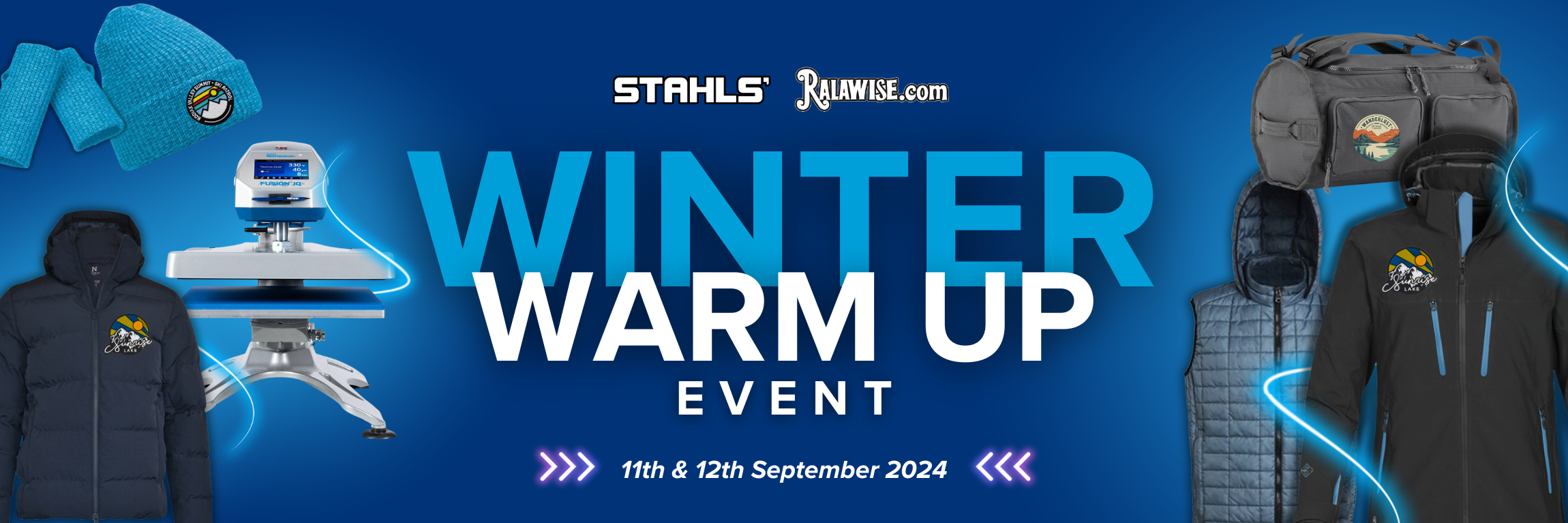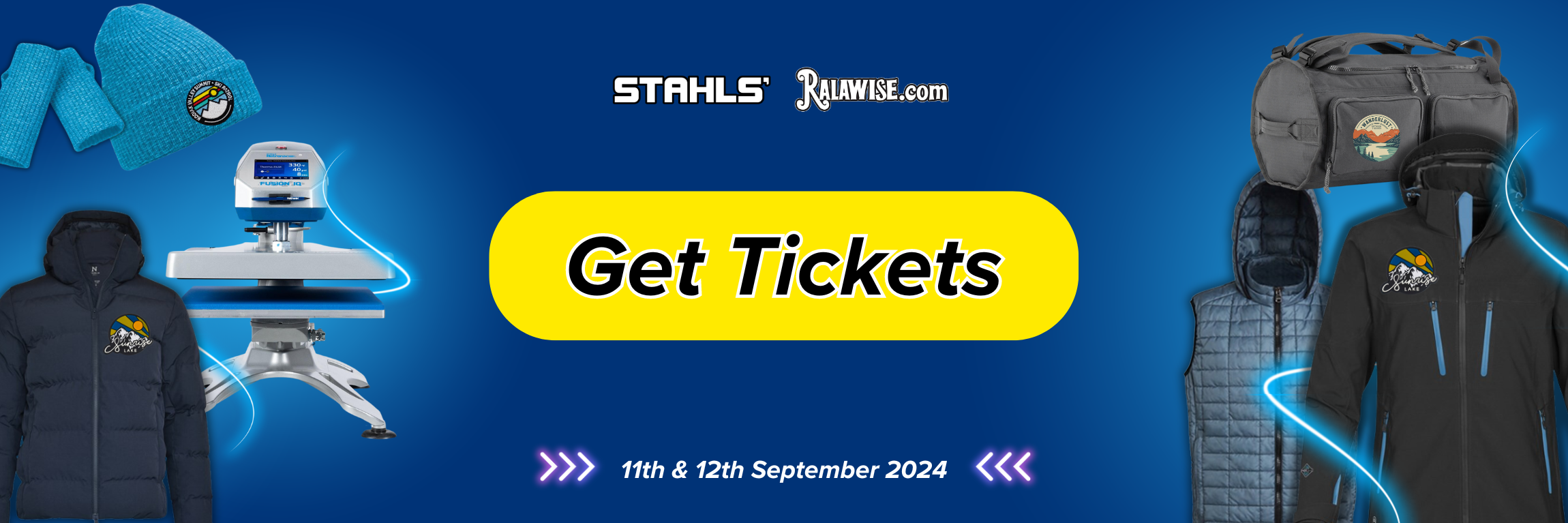Why You Need To Attend The Winter Warm Up Event
What is the Winter Warm Up Event?
This is the biggest-ever heat printing event in the UK. Co-hosted by Stahls' UK and Ralawise, this event has been designed to encourage heat printers to heat print those more challenging garments and accessories for winter.
Joined by well-known apparel manufacturers such as Beechfield, Stormtech, 2786, Nimbus and Premier, the event will take place on the 11th of September in Cheshire and on the 12th of September in Essex to enable heat printers from across the country to attend.
Why should you print winter apparel?
Because you can break into a custom apparel market that is under-utilised.
The sale price of a custom-printed winter jacket is high, but so is your profit margin.
Heat printers are often hesitant to print on polyester and coated fabrics due to well-known adhesion issues and scorching. Because of this, there is significantly less competition in this garment niche than there would be when compared to printing workwear.
The four main deterrents in heat printing are:
Heat-Sensitive Fabrics: Polyester is a synthetic fabric that is found in almost all jackets, coats, gilets and bags. Each type of polyester reacts differently to heat but one thing they all have in common is most polyester is heat-sensitive and printing it results in a scorched discolouration. If you're working with hats or beanies containing acrylic fibres, these can be so heat-sensitive that they might melt at a high temperature.
Dye Migration: Polyester fabrics are often dyed with disperse dyes, which can sublimate (turn from solid to gas) at the high temperatures used in heat printing. This can cause the dyes to migrate into the printed design, resulting in colour changes or ghosting effects where the original dye colour seeps through the print.
Adhesion Issues: Achieving good adhesion of the heat transfer material (such as vinyl or transfers) onto a coated fabric can be problematic. Many jackets, gilets or coats have a waterproof or shower-resistant coating on the fabric that makes printing heat transfers onto it difficult. The coating may melt at a high temperature resulting in a poor finish or just repel the adhesive on the back of the transfer all altogether resulting in a bubbled or peeling heat transfer.
Cost: Many heat printers decline jobs for printing winter garments due to the increased cost of the actual test garment in the first place. Stormtech are well known for their heavy-duty and weather-resistant coats and the price tag that comes along with them could be up to £300 per jacket. The fear of messing up a batch of these garments can set a heat printing business back a couple of grand.
But not for much longer.
The Winter Warm Up Heat Printing Event will equip you with all the knowledge you need to print heat-sensitive garments with no scorch marks, tackle dye migration and coated fabrics. Enjoy an in-depth seminar on all of these topics and get hands-on yourself with the demonstrations. You will also receive a high-end goody bag containing a Stormtech jacket and other blank garments to take away and get to grips with yourself.
Sign up for your Free Ticket below. Choose from two date & two locations for your convenience. Limited spaces remain.



